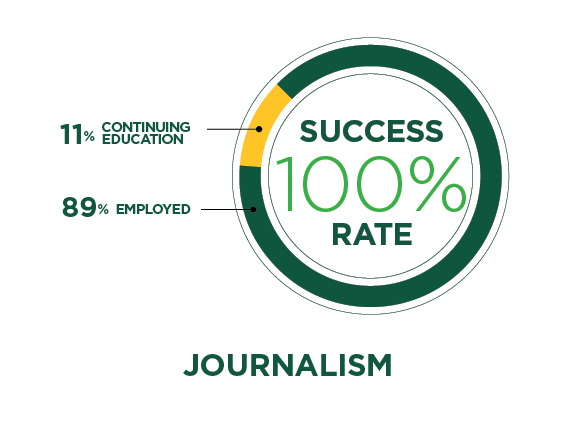Our Mission

Our department is committed to fostering the next generation of communicators, equipped with the skills and knowledge to navigate the ever-evolving landscape of media, journalism, public relations, advertising, and more. We provide a nurturing and innovative learning environment that prepares our students for diverse career opportunities in the field of communication.
In accordance with the NDSU’s student-focused, land-grant, and research priorities, and in the affirmation of the core mission, vision, and goals of the College of Arts and Sciences, the Department of Communication advocates the liberal arts through its exceptional teaching, prolific research, and relevant public service. As such, the Department of Communication advocates for all forms of human and intellectual diversity, demonstrates tolerance for all forms of human and symbolic expression, promotes civility and equity as teachers, researchers, and public servants, and constitutes the ethical principles of authenticity, credibility, and legitimacy as fundamental requirements of all human symbolic communication.
NDSU 2022 Career Outcomes Report

Our 2022 graduates average a 95% success rate according to our 2022 Career Outcomes Report. This means that 95% of our graduates are either employed or continuing their education within 6 months of graduating. The Department of Communication is dedicated to cultivating an environment that nurtures academic excellence, personal growth, and professional success. For more detailed information, please refer to the complete NDSU 2022 Career Outcomes Report.
Our History

Communication study began soon after the establishment of the university in 1890. Forensic activities began in 1896, the same year the student newspaper, the Spectrum, was established. Soon becoming a weekly, its first editions clearly appealed to those who hoped to promote the land-grant vision of the university. As its mission, editors declared, was “increasing college spirit and patriotism among the students and increasing the interest of North Dakota farmers and tradesmen in experimental work.”
More formal communication study opportunities appeared on campus shortly after the turn of the last century. A.G. Arvold arrived in 1907 to offer speech coursework, and a Department of Public Discussion was formed in 1921 as part of the School of Science and Literature. In 1952 the Department of Speech and Drama was created under the direction of Fred Walsh.
Prior to 1950 reporters from the Fargo-Moorhead Forum newspaper were occasionally hired to teach journalism courses. Robert Crom, director of communications for the president’s office, established the first sequence of communication courses in the 1950s. Offered under a designation of agricultural communication, Crom taught a year-long sequence of three courses: journalism, radio/TV production and publication writing and design.
When Crom became the university’s director of public relations he hired a full-time journalism instructor to expand offerings, Verne Nies. Nies had been on the staff of the Denver Post.
Donald Schwartz, a graduate assistant in Crom’s office, became assistant director of the office and instructor of television production courses in 1958. He left in 1964 to finish a Ph.D., and returned to NDSU in 1967 to a full-time faculty position in communication. Schwartz established curriculum in interpersonal and organizational communication and in 1968 was named the first chairman of the newly organized Department of Communication. Courses in what is now human communication (then speech) were offered through the department of speech and theatre under Walsh. Schwartz left NDSU in 1980 to become chairman of the Department of Communication at Cornell University in Ithaca, NY.
In the 1970s communication curriculum was established through minors jointly administered with the colleges of agriculture and home economics. By the end of that decade a professional minor in communication was given major status.
In 1984 Robert Littlefield took direction of the newly organized Department of Mass Communication, Speech Communication and Theatre. Theatre joined the fine arts college in 1992, when the Department of Communication was established, merging majors in mass communication and speech communication.
Timothy Sellnow became chair of the department in 1994. In 2000 Paul Nelson assumed the chair’s role as the department launched the region’s first Ph.D. in communication. Mark Meister became chair in 2011, followed by Stephenson Beck becoming chair in 2017.
In the 1970s the Spectrum began publishing twice a week, while the forensics team gained national prominence. KDSU-radio offered students the opportunity to work at a station affiliated with National Public Radio, part of NDSU’s radio tradition dating to the 1920s. Today KDSU has become part of the Prairie Public radio network, and students now learn radio broadcast at a new radio station, KNDS. The Spectrum, now a broadsheet, continues to publish twice weekly in addition to maintaining a website.
The department has grown to be one of the university’s largest. Today students may choose from five majors and minors at the undergraduate level, and graduate-level study at both the master’s and doctoral levels. About 375 undergraduates major in communication at NDSU, joining 40 master's students and 20 doctoral students.






